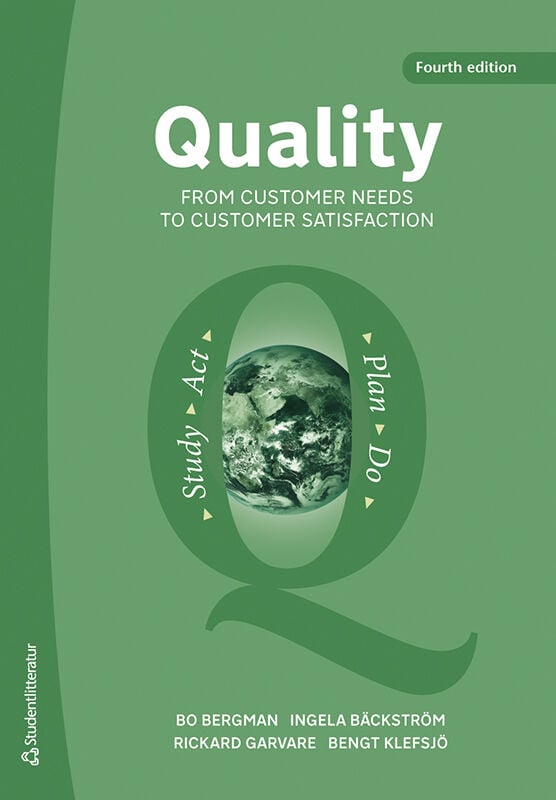
Quality from Customer Needs to Customer Satisfaction
Extramaterial
Lärarmaterial Quality from customer needs to customer satisfaction
Till denna bok finns ett lärarmaterial med bilder ur boken. Kontakta Jens Fredholm jens.fredholm@studentlitteratur.se för att få tillgång till detta.
Innehållsförteckning
Information
- Författare:
- Bo Bergman Ingela Bäckström Rickard Garvare Bengt Klefsjö
- Språk:
- Engelska
- ISBN:
- 9789144140261
- Utgivningsår:
- 1994
- Revisionsår:
- 2022
- Artikelnummer:
- 4633-04
- Upplaga:
- Fjärde
- Sidantal:
- 720